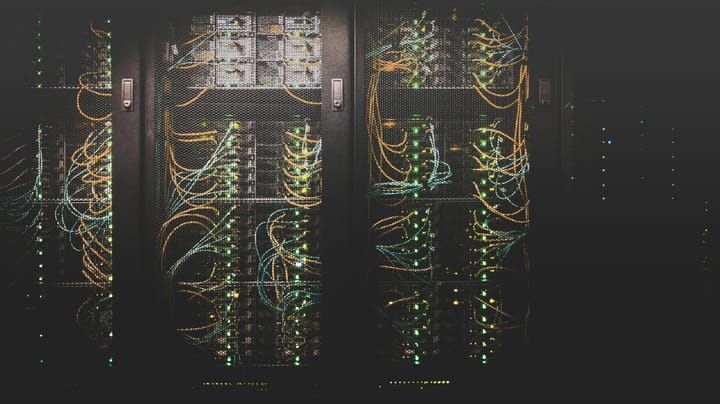AI Isn’t Killing QA - It’s Setting It Free

For as long as I’ve been in Quality Engineering, one thing has been true:
We spend too much time maintaining tests, and not enough time engineering for quality.
We have all felt it.
Flaky tests that fail for no reason.
Regression suites that take hours (or days) to run.
Coverage reports that look good on paper but mean nothing in production.
The real villain in QA isn’t AI.
It’s the busywork that has kept us stuck in maintenance mode instead of strategic mode.
And now, AI is finally making it possible to fight back.
The Wrong Kind of QA Is Dying
Every wave of technology in QA has been met with fear.
When Selenium and other automation frameworks took off, people said manual testers would disappear. They didn’t.
When CI/CD came along, people thought QA wouldn’t be needed at all. They were wrong.
What actually happened?
We got faster.
We got more embedded in development.
We found new ways to add value.
AI is just the next wave; and it’s coming for the wrong kind of QA work:
- Endless regression execution
- Manual environment setup
- Tedious mock and stub creation
- Script maintenance that eats your entire sprint
These tasks keep teams busy but rarely improve product quality. AI can take them over, and that’s a good thing.
The Conversations About AI in QA Are Broken
Right now, most discussions about AI in testing fall into two camps:
- Fear-driven - “AI is going to replace testers.”
- Tool-driven - “Check out the latest LLM feature in this platform.”
Both miss the real point.
The strategic value of AI in QA isn’t that it can run your test suite faster, or write a basic script in seconds.
The real value is that it can eliminate the bottlenecks that have kept QA from becoming a true engineering discipline.
It’s about changing where we spend our time.
Less fixing brittle scripts. More analyzing risk.
Less chasing false failures. More designing better test strategies.
Less verifying yesterday’s bugs. More preventing tomorrow’s.
The Rise of the QA Agent
In my upcoming book, Test Like a Machine, Think Like a Human, I talk about the next evolution of QA roles: the QA Agent.
Think of a QA Agent as your junior engineer who never sleeps:
- They can generate a full set of test cases from a Jira story in seconds.
- They detect flaky tests before you even run them.
- They summarize logs and point you to the root cause without hours of manual digging.
- They can spin up mocks, stubs, and environments on the fly.
And just like a junior engineer, they still need a senior engineer - you - to guide them, set priorities, and make the calls that require human judgment.
From Test Generation to Intelligent Strategies
Here’s where AI is already making a measurable impact:
AI-Driven Test Generation
Given a set of requirements, AI can propose a suite of test cases; functional, negative, and edge cases; in seconds.
Your role shifts from writing everything from scratch to validating and refining what AI produces.
LLM-as-a-Judge for CI Failures
When pipelines break, the hardest part isn’t just rerunning; it’s knowing why. Was it infra flakiness, a flaky test, or a real regression?
LLMs can analyze logs, stack traces, and historical failure patterns to label failures automatically.
Instead of wasting hours triaging noise, engineers get clear signals: “infra issue, safe to retry” vs. “product regression, investigate now.”
Intelligent QA Strategies
LLMs can also analyze historical defect data, coverage reports, and user behavior to suggest where testing should focus.
Instead of “more tests everywhere,” you get “the right tests in the right places” paired with CI that tells you which failures actually matter.
The Human Role: AI Quality Architects
This shift is creating a new role in our industry: the AI Quality Architect.
These are engineers who:
- Design the AI-augmented test strategy.
- Decide where automation should be human-driven and where it can be AI-driven.
- Ensure compliance, ethics, and data privacy in AI workflows.
- Mentor teams on how to work with AI instead of against it.
The future of QA isn’t about being replaced.
It’s about being elevated; moving from test executors to quality architects who shape how AI is used across the SDLC.
The Risks and the Rules
AI in QA isn’t without its challenges.
Data Privacy & Security
In industries like healthcare, financial services, or government, sensitive data can’t be sent to just any AI service.
Your AI tooling needs to be compliant with HIPAA, SOC 2, GDPR, or whatever frameworks govern your space.
Over-Reliance on AI
AI makes mistakes. If you trust it blindly, you’ll ship broken tests; or worse, a broken product.
The human role is to validate, not just consume.
Shifting Skill Sets
Writing raw test code is becoming less important.
Understanding systems thinking, risk-based testing, and AI orchestration is becoming more important.
Why I’m Writing This Book
I recently spoke with Deep Barot, CEO of ContextQA, and it confirmed something I’ve felt for years:
The industry needs a voice that cuts through the hype and fear around AI in QA.
Too many people are talking about AI as if it’s:
- A magic button that replaces testers.
- Just another feature in the latest tool release.
It’s neither.
AI is the missing piece that lets QA finally do what we’ve been promising:
Move upstream.
Reduce waste.
Focus on what matters.
My book, Test Like a Machine, Think Like a Human, is my attempt to make that shift real for as many teams as possible.
What the Book Covers
Here’s a quick preview of the chapters:
- The Old Model of QA vs. the AI-Powered Future
- What AI Can (and Can’t) Do in Testing
- The Rise of the QA Agent
- LLMs and Test Generation
- Self-Healing Pipelines
- Testing AI Systems: LLMs, Agents & Intelligent QA Strategies
- Jira + Allure + LLM Sync: AI & Intelligent Requirements
- Redefining Test Coverage with AI
- The New Roles in QA: From Test Engineers to AI Quality Architects
- How to Integrate AI into Your QA Stack
- Risks, Ethics, and PHI: Building Compliant AI Workflows
- Case Study: Snap eHealth’s Automation Evolution
- The Future: Autonomous QA and Developer-QA Co-Pilots
- How to Start: AI Tools, Stack, and First Projects
- Your Career in the AI-QE Era: What to Learn Next
Where We Go From Here
The shift is already happening.
QA engineers who learn how to work with AI; guiding it, validating it, and integrating it into intelligent workflows; will thrive.
Those who cling to the old model of QA as endless manual verification will find their work increasingly automated away.
I believe AI will be the best thing that ever happened to QA.
Not because it replaces us, but because it frees us.
It’s time to stop thinking of ourselves as the “last line of defense” and start seeing ourselves as the architects of quality in an AI-powered world.
Launching January 2026
Follow me here on LinkedIn for chapter previews, field-tested playbooks, and real-world AI-QE stories from the teams making this shift today.
👉 Want more posts like this? Subscribe and get the next one straight to your inbox. Subscribe to the Blog



Comments ()